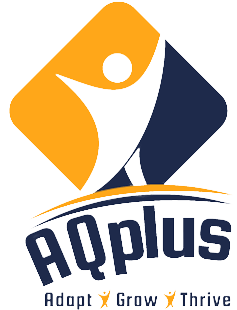Why Change Really Falls Flat and How to Fix The Knowing-Doing Gap
In the raging storms of today’s business landscape, marked by volatility, uncertainty, complexity, and ambiguity (VUCA), leaders face an unprecedented challenge: the knowing-doing gap. This chasm, defined as the willingness to let talk substitute for action, has become a critical stumbling block for organizations striving to navigate change effectively. It’s vital to remember that while discussions, decisions, and plans are necessary, they are not substitutes for tangible action. It’s time for a provocative yet essential wake-up call to business leaders everywhere: to transform their approach from contemplation to action, from knowing to doing.
Jean Gomes’ insightful article on how mindset defines our wellbeing underscores a pivotal message for leaders navigating the VUCA world: the quality of our mindset fundamentally shapes our actions and outcomes. Gomes argues that a shift in mindset is crucial for enhancing wellbeing and productivity. This principle directly applies to the knowing-doing gap; a leader’s mindset can either perpetuate this gap or bridge it. It’s a stark reminder that the way leaders perceive and react to challenges can either immobilize their organization or propel it forward.
The Knowing-Doing Gap: A Silent Saboteur
The knowing-doing gap is more than just an operational glitch; it’s a silent saboteur of change. In the face of VUCA challenges, the comfort of discussion can be seductive. Teams can spend endless hours in meeting rooms, articulating strategies, and deliberating on the best course of action. Yet, without the crucial step of implementation, these efforts are akin to a ship that’s never left the harbor. It’s not the storm that defeats the ship but the failure to sail.
The Cost of Inaction
The cost of this gap is not just a delay in action but a profound impact on organizational agility, employee morale, and ultimately, the bottom line. As leaders allow discussions to overshadow actions, opportunities slip through the cracks, innovation stagnates, and competitors gain ground. It’s a stark reality in the VUCA world, where the only constant is change, and the speed of execution can make or break an organization’s success.
Bridging the Gap: From Insight to Impact
To bridge the knowing-doing gap, leaders must cultivate a mindset of action. This begins with recognizing the gap not as a procedural issue but as a leadership challenge. It calls for a shift from a culture of contemplation to one of execution. Leaders must inspire their teams not just to plan but to act, not just to discuss but to deliver. This requires setting clear expectations, empowering teams, and celebrating the milestones of implementation, no matter how small.
Jean Gomes’ emphasis on the importance of mindset resonates profoundly here. Leaders must adopt a growth mindset, viewing challenges as opportunities to learn and grow rather than obstacles to be deliberated. This mindset shift is essential for fostering an organizational culture where action is valued over discussion, where employees are encouraged to take calculated risks and learn from their outcomes.
Leading by Example: The Ultimate Catalyst for Change
In closing, the most potent tool for bridging the knowing-doing gap is leadership by example. Leaders must not only advocate for action but also demonstrate it. In the VUCA world, where change is the only constant, the ability to adapt and act swiftly is paramount. Leaders who embody this principle, who move swiftly from knowing to doing, will not only bridge the gap but will also lead their organizations to thrive in the face of uncertainty.
As we navigate the turbulent waters of the VUCA world, let us remember that the greatest ship is not the one that withstands the storm but the one that sets sail, guided by a captain who knows when to turn insight into action. The knowing-doing gap does not have to be a chasm that swallows our best intentions. With the right mindset, inspired by leaders like Jean Gomes, it can be a bridge to a future marked by resilience, agility, and enduring success.
Take the Leap: Close Your Knowing-Doing Gap with the AQTeam QuickScan
You’ve read about the crucial role closing the Knowing-Doing Gap. You might be wondering how to turn your good intentions into action. It all starts with a quick assessment of your team’s ability to embrace uncertainty, face new challenges, be resilient in the face of setbacks, and be open to new ideas and ways of doing things. Knowing your team’s Adaptability Quotient (AQ) offers you the insight you need into closing the knowing-doing gap and propelling change. Now is the time to take a critical step forward for your team or organization. The AQTeam QuickScan is your gateway to understanding where your employees stand and how you can improve your collective adaptability to thrive in a world of constant change.
Don’t let the knowing-doing gap hold you back any longer. Whether your biggest challenge is navigating personal transformation or steering your organization through uncharted waters, knowing your AQ is the first step towards actionable change. The AQTeam QuickScan provides a comprehensive assessment of your team’s adaptability strengths and areas for growth, offering insights that are both enlightening and actionable.
Why Take the AQTeam QuickScan?
- Identify Gaps: Discover where the knowing-doing gap is most pronounced in your team or organization.
- Measure Adaptability: Gain a clear understanding of your team’s AQ and how it compares to industry standards.
- Actionable Insights: Receive tailored recommendations to enhance your team’s adaptability, resilience, and capacity for innovation.
- Empower Change: Equip your team with the tools and mindset needed to turn challenges into opportunities and plans into action.
Your Call to Action
This is your moment to transform insight into action. By understanding your team’s AQ, you can bridge the knowing-doing gap, fostering a culture of adaptability that empowers every member to contribute to meaningful change. The AQTeam QuickScan is more than just an assessment; it’s a roadmap to unlocking your team’s potential in an ever-evolving landscape.
Take the first step towards closing the knowing-doing gap and elevating your team’s performance. Engage with the AQTeam QuickScan today and pave the way for a future where adaptability drives success. Let’s not just dream of a better tomorrow; let’s make it a reality, one action at a time.







